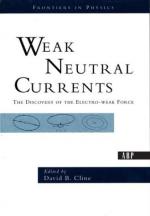|
This section contains 421 words (approx. 2 pages at 300 words per page) |

|
In the early 1970s, the theories describing the electromagnetic and weak forces were unified into a single electroweak theory. This was the first unification of forces to occur since the late nineteenth century, when the theories of electricity and magnetism were unified into electromagnetic theory. Before the unification, the weak interaction was only poorly understood; there was a collection of ad hoc rules, but no fundamental theoretical unification existed. This unification of two seemingly unrelated interactions is one of the most important accomplishments in theoretical physics in the twentieth century, and it sparked a whole industry of physicists trying to further unify the remaining fundamental forces.
The fundamental objects of the electroweak theory are the particles of matter called quarks and leptons, which are represented by quantum fields, mathematical functions with a value at each point in space-time. The fields consist of complex numbers, which have...
|
This section contains 421 words (approx. 2 pages at 300 words per page) |

|


